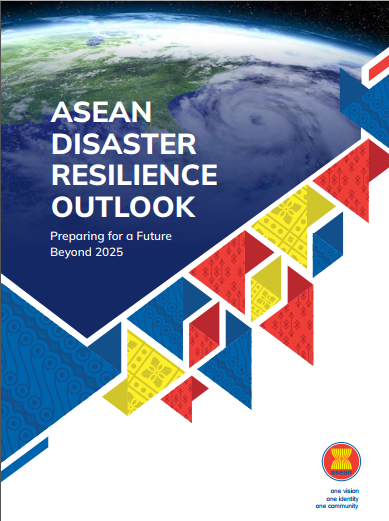Detail Publications


ASEAN Disaster Resilience Outlook
Disaster Resilience is a crucial component of southeast ASIA's aspiration to build a resilient regional community, which can adapt and respond to the plethora of challenges in the region ranging from social and economic vulnerabilities to disasters and climate change.
In 2020, the region was hit by 405 disaster events, which affected
19.3 million people, displaced 2.4 million and led to damages
worth of $227.4 million. The effects of climate change are 1
projected to become more intense and pronounced in Southeast
Asian countries. The report of the IPCC in 2021 finds that the
region has significant increases in extreme weather events, such
as heatwaves and strong monsoons, which are projected to
intensify as global temperatures rise further in the future.
Vulnerability to natural hazards and the effects of climate change
points to the mounting pressure on Southeast Asia to further
strengthen disaster management and resilience to ensure a
prosperous future. The significant disruptions caused by the
COVID-19 pandemic since 2020 have again highlighted the
importance and difficulty in building disaster resilience, as the
world faces increasing risks of concurrent or complex disasters.